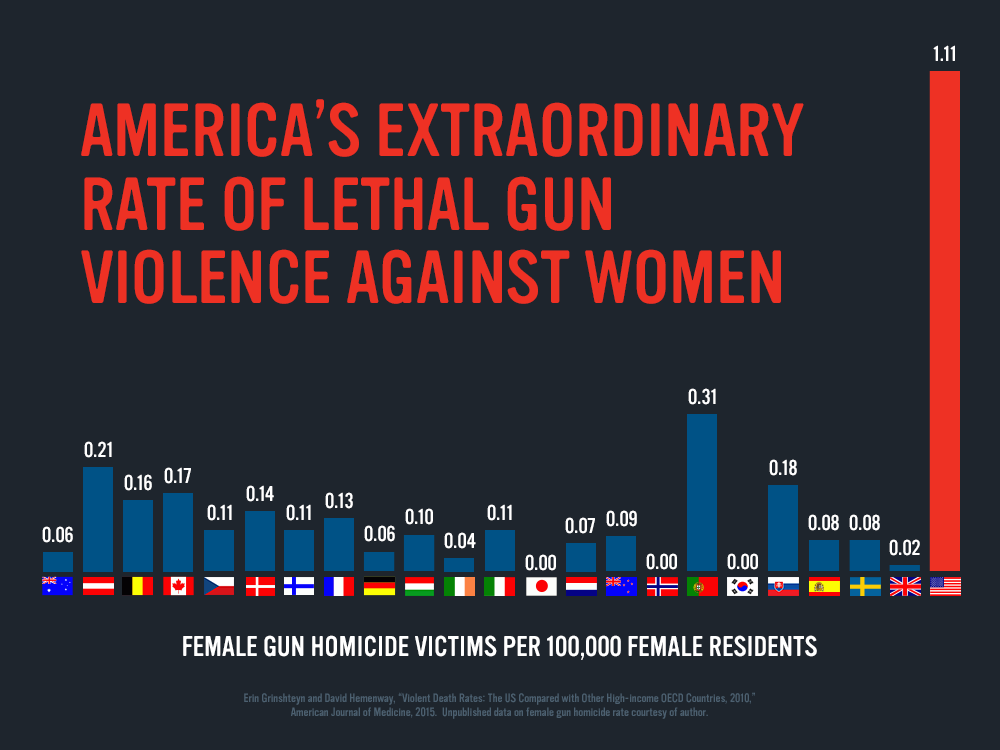Domestic violence has a prominent standing in American society, and while mass shootings didn’t use to, they’re slowly starting to climb up over the past couple of years. Much of the charge is led by men with histories of abusive behaviour in the home, and access to firearms. Between 2015 and 2017 of this month, there were 46 mass shootings in the United States. It’s the developed nation with the highest rate of gun violence and homicide by a big leap (25X more than their counterparts), thanks to lax laws surrounding gun ownership and a meek, grey area surrounding corresponding consequences for domestic abusers.
Many of the deadly mass shootings that have occurred over the past couple of years have been committed by men with a history of domestic violence (approximately 54% percent) Most recently, Kevin Neal killed five people in Northern California, and also happened to be at the center of a domestic-violence call just one day before the shooting. The Texas gunman, Devin Patrick Kelley, assaulted his wife and their child in 2012. In February, Cedric Ford shot 17 people at his office in Kansas just minutes after his girlfriend served him with a restraining order for abuse. At the Pulse shooting back in 2016, Omar Mateen was revealed by both his ex-wife and widow to be a cruel, controlling, and physically abusive man.
These men should be forced to face rehabilitation and never have access to firearms. Countries like Japan, Canada, and the UK have rigorous processes and background checks before you can get your hands on a gun. Japan has pretty much a zero-tolerance of gun ownership with stringent laws, while the U.K has banned many types guns and require extensive certificates, with references and consistently renewed applications. in the U.S, it’s wildly easy to be a civilian and own a gun.
To make it worse, U.S. laws that constitute the loss of a right to own a gun can be avoided with loopholes, and an innumerable amount of private, unlicensed sellers exist all over. Additionally, while future gun purchased can be shut down, confiscation of previous ones is usually unenforced by states.
While there’s a clear link between U.S. mass shootings and domestic violence, it’s not as easy as saying the missing link in the formula to mass shootings is that every attacker has a history of domestic violence. But with at least 10 million occurrences of domestic violence all over the nation, we can’t afford to have the number of mass shootings increase from occasional to more regular. That means there are over 10 million reasons to start increasing awareness and motivating each other to do something about this problem. Linking these statistics might not be a consistently reliable predictor, but it’s obvious proof that this nation-wide epidemic of violence can start small before it’s magnified on a more tragic, mass level. Domestic violence is a “psychological training ground” for mass killings and terrorism, as this NYT article from 2016 puts it.
Today is International Day for the Elimination of Violence against Women. You can do your part to lower these stats and start getting involved with causes that matter through these resources:
The Coalition to Stop Gun Violence


